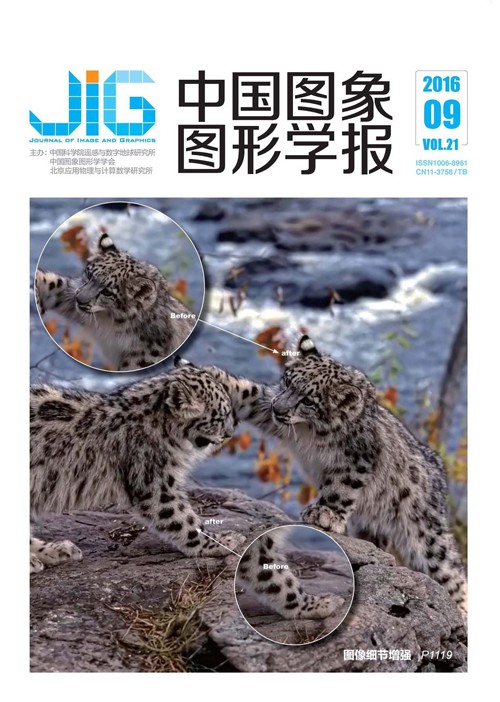
基于频率簇模型的人脸识别
摘 要
目的 针对复杂条件下人脸识别鲁棒性差的问题,提出了一种基于频率簇(FC)模型的人脸识别方法。方法 该方法首先在人脸图像内检测目标区域,在目标区域内划分特征子区域并设定采样单元,统计采样单元内前景区域和背景区域的信息熵;然后计算采样单元的熵能量和能量频率,归一化频率系数,利用能量频率的二阶偏导确定人脸子区域边界,以此得到有效采样单元,建立人脸主特征信息;最后,根据采样单元的坐标位置、熵能量和能量频率信息进行排序,得到每个采样单元的几何布局,以采样单元的熵能量、能量频率和几何布局构建人脸的频率簇模型,并以此作为人脸特征进行识别匹配。结果 在FERET、ORL、Yale组合人脸库和CMU-PIE人脸库上进行实验测试,该方法的识别准确率分别为99.11%和97.36%,单幅人脸图像的平均识别速度为0.077 s,结果表明,该方法对复杂条件下的人脸识别具有很好的实时性和准确性。结论 该方法可以有效克服光照变化、特征模糊、姿态和表情变化等因素对人脸识别的影响,具有较好的鲁棒性,对提高人脸识别性能具有重要意义。
关键词
Face recognition method based on frequency cluster
Yuan Heng1, Wang Zhihong1, Jiang Wentao2(1.College of Business and Management, Liaoning Technical University, Huludao 125105, China;2.College of Software, Liaoning Technical University, Huludao 125105, China) Abstract
Objective A novel approach to robust face recognition based on frequency cluster is proposed to solve the problem of robust face recognition under complex conditions. Method First, a continuous information sampling unit is scattered across a detected sub-region face image. Information entropy in the foreground and background regions of the sampling unit is calculated. The entropy energy and energy frequency of the sampling unit are then calculated; the weaker energy frequency is removed by filtration and the edge-of-face frequency is calculated by the second-order partial derivatives with normalized frequency coefficient. Thus, the main feature information of the face is established. Finally, the geometrical layout of each sampling unit is obtained according to the coordinate position of the sampling unit, the entropy energy, and the energy frequency. The frequency cluster model is taken as a facial feature for identification and matching, and is constructed based on entropy energy, energy frequency, and geometrical layout. Result The average recognition accuracy was 99.11% on FERET and ORL-Yale database, and 97.36% on CMU-PIE database. The average processing speed of a single face image was 0.077 seconds. Experiments showed that this method could overcome the effects of illumination, varied poses, and varied expressions, while taking advantage of the strong robustness of frequency cluster. Conclusion The proposed approach showed good adaptability to face recognition and significantly improved the robustness of face recognition under complex conditions, such as illumination variations, feature ambiguity, pose, and expression changes.
Keywords
|



 中国图象图形学报 │ 京ICP备05080539号-4 │ 本系统由
中国图象图形学报 │ 京ICP备05080539号-4 │ 本系统由